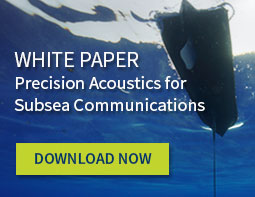Cefas: Using Wave Gliders for Autonomous Fish Stock Monitoring
Liquid Robotics — August 3, 2018
Collecting data and mapping fish stocks can be very challenging especially if you’re trying to accomplish this in the turbulent North Sea. With strong currents, crowded with hazards, such as sandbanks, merchant shipping and fishing vessels, collecting high quality data is daunting. This is especially true when you’re collecting data on some of the smallest marine life in the ocean (zooplankton and fish).
Overcoming this challenge, researchers at Cefas (Centre for Environment, Fisheries and Aquaculture Science, UK) used a new approach to collecting their data. Turning to autonomous systems, they configured a Wave Glider, unmanned ocean robot, equipped with state-of-the-art oceanographic sensors (Simrad EK80 broadband echosounder, two transducers (200Hz and 70Hz), Simrad electronics, WBT Mini) and readied it for deployment in the North Sea. The mission goal was to employ the use of autonomous systems to acoustically monitor fish vs. relying on the traditional techniques that require survey vessels. By complementing existing methods, the new development could eventually lead to cost savings, increased efficiencies, and higher resolution data.
This week Cefas announced they had successfully tested this approach. The Wave Glider completed a 6-week, 1700km/1056 miles mission autonomously collecting fisheries acoustics and physical properties of the sea surface. This data included salinity, temperature, oxygen, fluorescence, turbidity and solar irradiance information. The Wave Glider was also equipped with a meteorological sensors recording wind speed and direction, air temperature and barometric pressure. This meteorological data will be used to estimate sea state and performance of the acoustic system under different weather conditions.
Currently, the mission data is being analysed. Cefas reports preliminary results indicate capturing diurnal (day-night) vertical migrations of zooplankton and other organisms in the water column, as well as schools of fish. Obtaining this high resolution, insitu data over this extended period will provide new insights into the fish populations and ecosystems around the UK.
“These autonomous vehicles (Wave Gliders) could eventually take over elements of ship-based monitoring of the fish and zooplankton community by being able to identify these components of the food chain from the acoustic data alone and thus saving money by reducing the durations of ship-intensive surveys,” said Dr. David Pearce, Cefas, Head of Profession, Marine Observations Systems and in command of this mission.
For the past five years, Liquid Robotics and Cefas have worked together to advance the study of marine science in the North Sea. Along with fish and zooplankton research they have used Wave Gliders for environmental monitoring. Researchers at Cefas have used Wave Gliders to gain greater spatial coverage between their other data collection methods such as SmartBuoys and satellites. Being able to have persistent, insitu measurements through rough and cloudy conditions provides continuous data feeds during times where buoys and satellites are most restricted.
For more information on the great work Cefas has achieved using Wave Gliders, please read our case study and visit Cefas.
